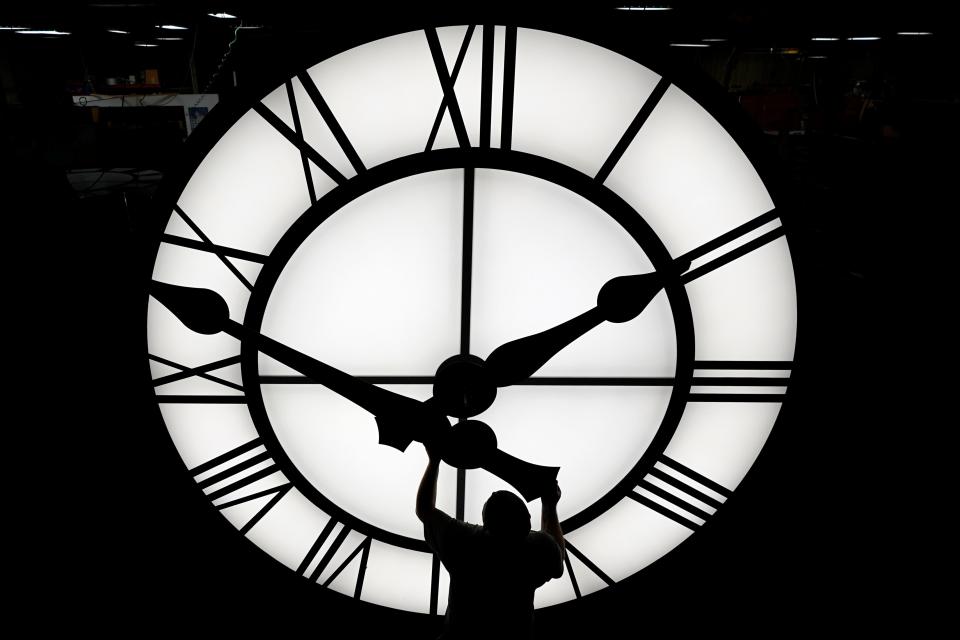When does daylight saving time end? Here's when to set your clocks back in Utah in 2023
When do the clocks change, and why do we use Daylight Saving Time?
Those questions were among the top trending topics across the U.S. in recent weeks, according to Google (counting instances where the incorrect "savings" was used), showcasing the confusion that Americans show every year about this time, and the moment in the spring when the clocks are pushed the other direction.
The search data indicates Americans typically just want to know the basics — when the clocks change, and why. But as debates continue to rage over the topic, over the apparent health issues associated with the clock changes, over their apparent economic costs and over the different policies used in different states and in different countries, it can be difficult to find simple answers.
What is Daylight Saving Time?

Daylight Saving Time, or DST, was first used in the U.S. in 1918 as a way to conserve energy during wartime. Nearly a century later, many Americans believe the practice is antiquated, with recent research suggesting it may cause more problems than it solves.
Utah has been a telling example, with a series of legislative efforts to exempt the state from DST having seen public debate in recent years, including one last year that would have had Utah sticking to Mountain Standard Time for the full year.
But none of those measures has so much as made it past a committee, and at least for now, Utahns must join with most of the rest of the U.S. and continue to "spring forward" and "fall back."
So when do the clocks change?
In Utah and most of the U.S., Canada and nine other regional territories, including Cuba and Bermuda, the clocks move backward by one hour in the early morning on Sunday, Nov. 5. At 2 a.m., the clocks should move back by one hour, to 1 a.m.
It doesn't happen everywhere, though.
Neither Arizona nor Hawaii use Daylight Saving Time, and their clocks stay the same year-round. The practice causes little heartache in Hawaii, which is isolated from other states, but Arizona's bucking the trend can sometimes confuse its closest neighbors as it vacillates between the Mountain Standard time zone and the Pacific time zone. Starting Sunday, it will sync back up with its MST neighbors like Utah.
The majority of countries that observe some form of DST have already turned the clock back, making the switch a week earlier than the U.S., according to timeanddate.com, which tracks times around the world.
The U.S. is one of nine countries waiting for Nov. 5, although neighbors Canada and Mexico also wait.
There are 175 countries and territories worldwide that don't change their clocks at all, compared with 74 that do, according to timeanddate.com.
Why do we bother?

Changing clocks to better match up with the seasons goes back to ancient times, but the current practice of moving the clocks forward for part of the year is typically credited with starting in World War I-era Germany, where the idea was adopted as a way to conserve fuel and allow for another hour of work productivity.
Most countries dropped the practice after the war, but Great Britain kept up the practice, making it a permanent national policy in 1925.
In the U.S., Daylight Saving Time returned with World War II and then left up to states to decide whether to adopt it or not. The Uniform Time Act, passed in 1966, attempted to simplify DST patterns, and most states have followed the same dates for DST ever since.
Originally, DST lasted from the last Sunday in April to the last Sunday in October, but it has been amended twice since, extending it to its current length from the second Sunday in March to the first Sunday in November.
There have also been special cases, such as during the energy crisis of the 1970s when Congress ordered states to go on DST for more than a full year between January 1974 and April 1975.
What does it do?

While changing the clocks is a twice-a-year habit, few Americans know why they are doing it. A report two years ago from Rasmussen Reports suggested only one-third of Americans thought it was worth the hassle, and many didn't understand why they were supposed to do it.
Pushing the clocks forward in the summer has helped create a tradition of late summer evenings, and the extra hour of daylight can be indispensable for farmers, ranchers, golfers, hikers and others who enjoy more time outdoors.
But studies in recent years have tied clock changes to health issues, increased car accident rates, workplace injuries and even depression. There is also a body of research suggesting that reduced workplace productivity and maintenance issues resulting from the clock changes take a toll on economic activity.
Some businesses have vouched for DST as being a good thing, especially golf courses, grill and charcoal industries and other companies that bank on people being outdoors during their waking hours.
I thought we voted to stop changing clocks. What happens next?
The U.S. Senate voted unanimously last March to pass the Sunshine Protection Act, which would extend DST to last for the entire year, but it never received a vote in the House and expired before it ever received a serious look.
Lawmakers in many states, including Utah, have proposed various measures in recent years attempting to end clock changes, but in most cases, they've stalled or failed.
There are only two ways to end daylight saving time changes in the U.S. Either Congress enacts a federal law or states receive permission from the U.S. Transportation Secretary to stay on permanent standard time. There is no allowance for states to stick to daylight saving time permanently, as has been proposed before in Utah.
So, at least for now, the usual clock-changing routine remains in effect.
David DeMille writes about southwestern Utah for The Spectrum & Daily News, a USA TODAY Network newsroom based in St. George. Follow him at @SpectrumDeMille or contact him at ddemille@thespectrum.com. To support and sustain this work, please subscribe today.
This article originally appeared on St. George Spectrum & Daily News: When do the clocks fall back? What to do as daylight saving time ends

